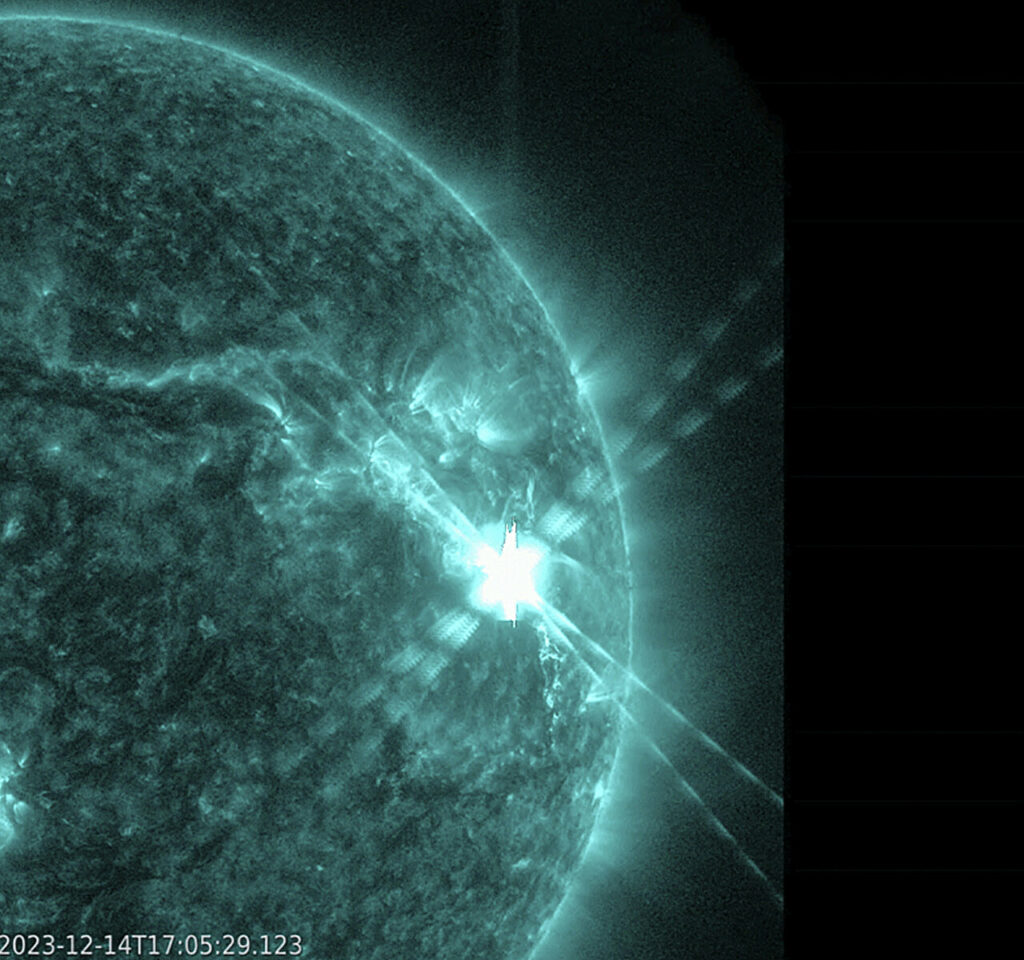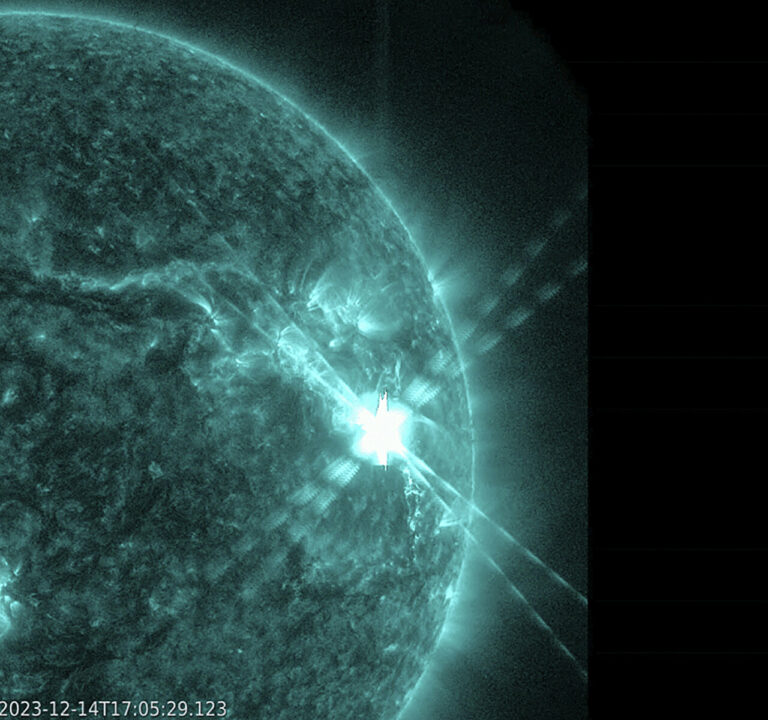Largest solar flare in recent years causes temporary disruption to Earth’s radio signals.
A NASA telescope has documented the most substantial solar flare in years, causing a temporary disruption in radio communication on Earth. The sun emitted this significant flare, accompanied by a substantial radio burst, resulting in a two-hour interference with radio signals in parts of the United States and other sunlit regions globally.

Scientists from the National Oceanic and Atmospheric Administration (NOAA) noted that this event marked the most substantial flare since 2017, impacting even higher frequencies. NOAA’s Shawn Dahl described the occurrence as one of the most significant solar radio events ever recorded. The extensive radio burst affected various communication systems, leading to disruptions reported by multiple pilots across the country.
Currently, scientists are closely monitoring the sunspot region, assessing the potential for a plasma outburst, also known as a coronal mass ejection, directed towards Earth. If such an event occurs, it could trigger a geomagnetic storm, disrupting high-frequency radio signals in higher latitudes and potentially inducing northern lights or auroras in the ensuing days. The eruption took place in the far northwest region of the sun, and NASA’s Solar Dynamics Observatory captured the event in extreme ultraviolet light, showcasing a brilliant flash of energy. Launched in 2010, the spacecraft continuously observes the sun from an exceptionally high orbit around Earth. As the sun approaches the peak of its approximately 11-year solar cycle, the anticipation is for maximum sunspot activity in 2025.
This article is republished from PhysORG under a Creative Commons license. Read the original article.
Do not forget to share your opinion with us to provide you with the best posts !




0 Comments